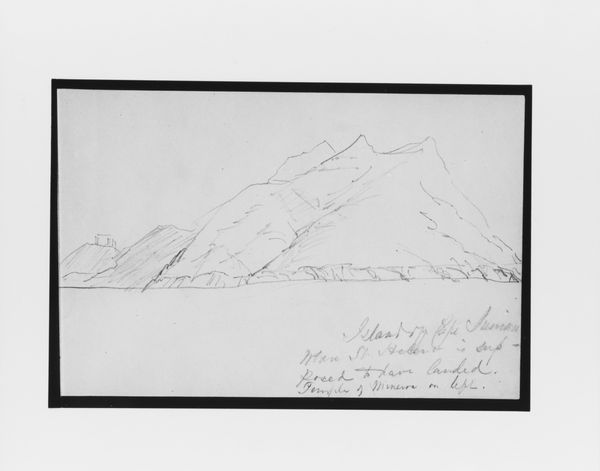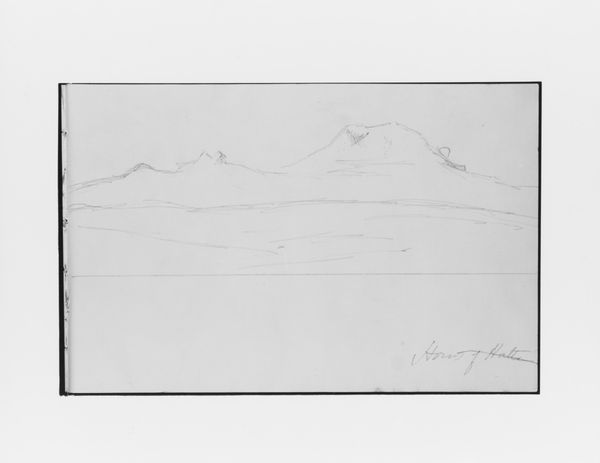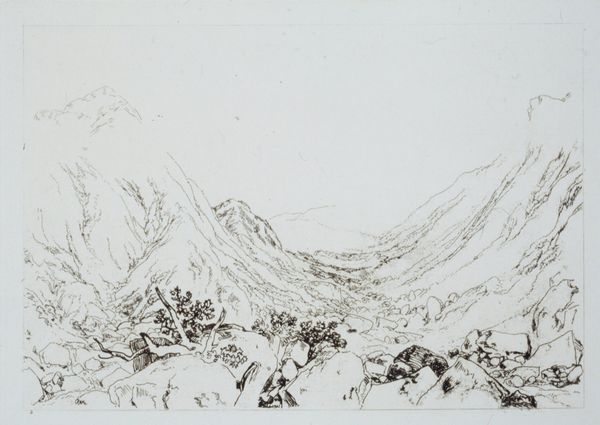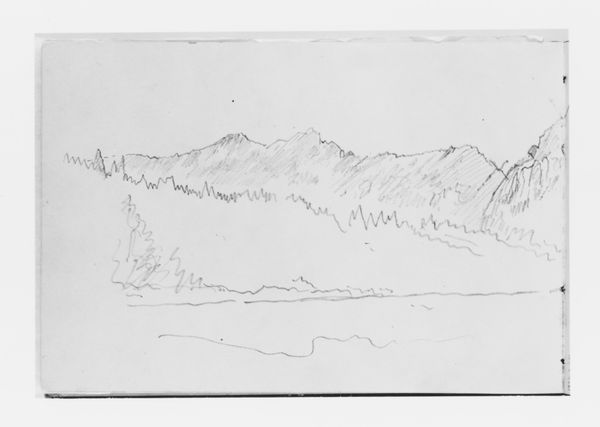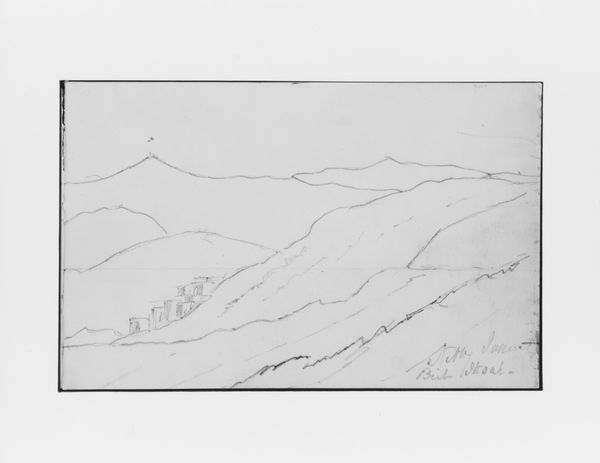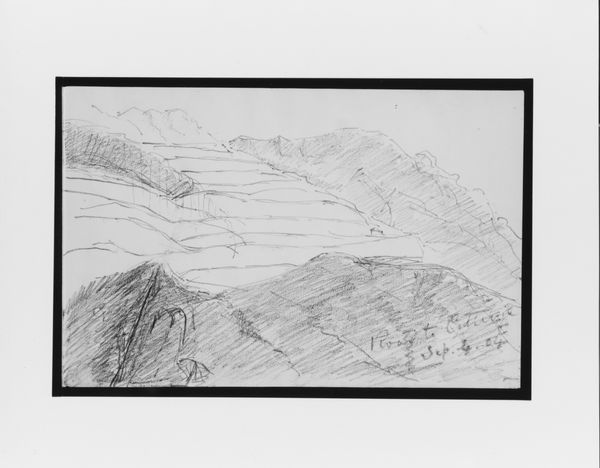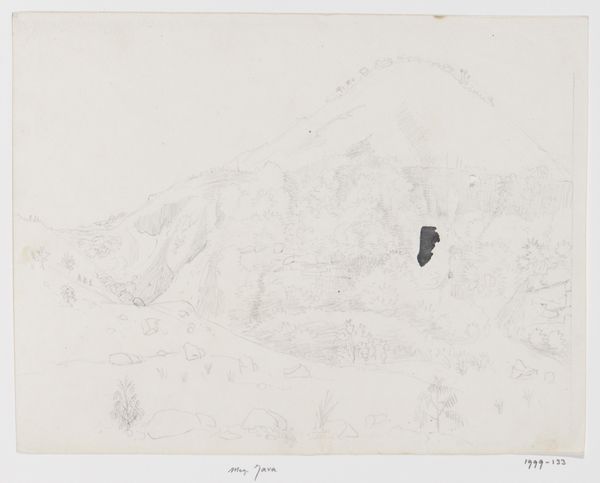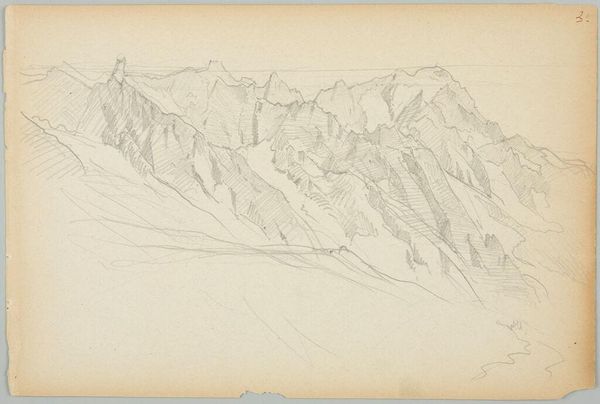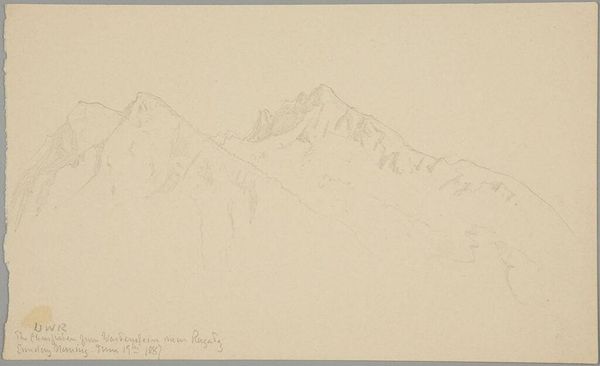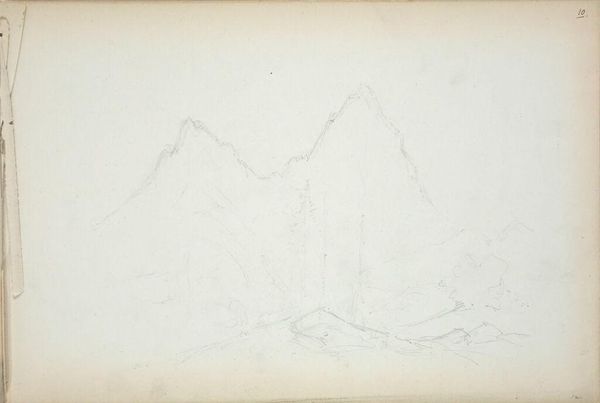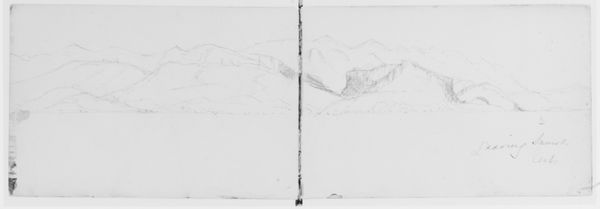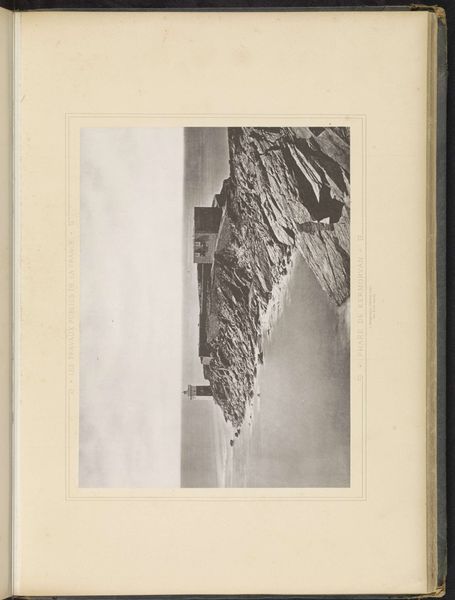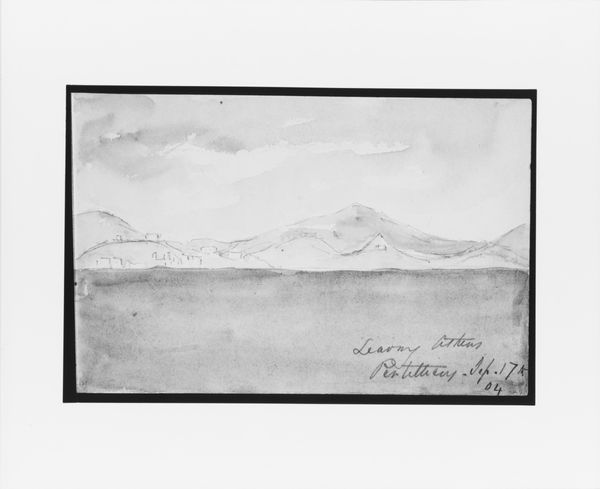
drawing, pencil
#
drawing
#
landscape
#
pencil
#
realism
Dimensions: 5 1/4 x 8 1/4 in. (13.3 x 21 cm)
Copyright: Public Domain
Curator: Here we have Mary Newbold Sargent's pencil drawing, "Missilonghi from Patras," created in 1904. Editor: It's immediately striking, this stark, almost melancholic simplicity. The bare pencil lines capture a sense of solitude, a desolate grandeur. Curator: The composition is quite classical, wouldn't you agree? The way she's structured the mountains, layering the forms to create depth—it adheres to many established landscape conventions. Note how the shading provides an almost sculptural dimension to the peaks. Editor: I see the visual appeal, yes, but knowing Missolonghi's history… the sieges, the resistance… this quiet vista is heavy with unspoken stories of national identity and sacrifice. Patras, across the bay, also carries its own weight within the Greek narrative. Did Sargent engage with any of that history? Was she conscious of this loaded landscape? Curator: The sketchbook context suggests a personal engagement, a traveler’s observation. The marks, the hatchings are evidence of observation and attention. I'd suggest the focus here is more on the aesthetic interplay of form and light across the mountainous landscape. The realist style privileges objective rendering over subjective commentary. Editor: Even objective renderings can carry subjectivity, often unintentionally. The very choice of subject reveals a preference. In that era, Greece held potent symbolic weight relating to Western cultural heritage but was simultaneously enduring political and social strife. What might Sargent, as an American woman traveling and drawing, have hoped to communicate through such imagery? Curator: That is the mystery with a sketchbook piece like this. Perhaps she saw pure form, the lines and tones creating an interesting and pleasing composition and that’s the entire premise. The sparseness focuses the eye on the abstract underpinnings of nature. Editor: I suppose it's about allowing the piece to invite questions of both aesthetic appreciation and broader socio-historical significance. Thank you for the clarification, my appreciation of this work has grown. Curator: And for me, I shall think on those political contexts more. Thank you.
Comments
No comments
Be the first to comment and join the conversation on the ultimate creative platform.
